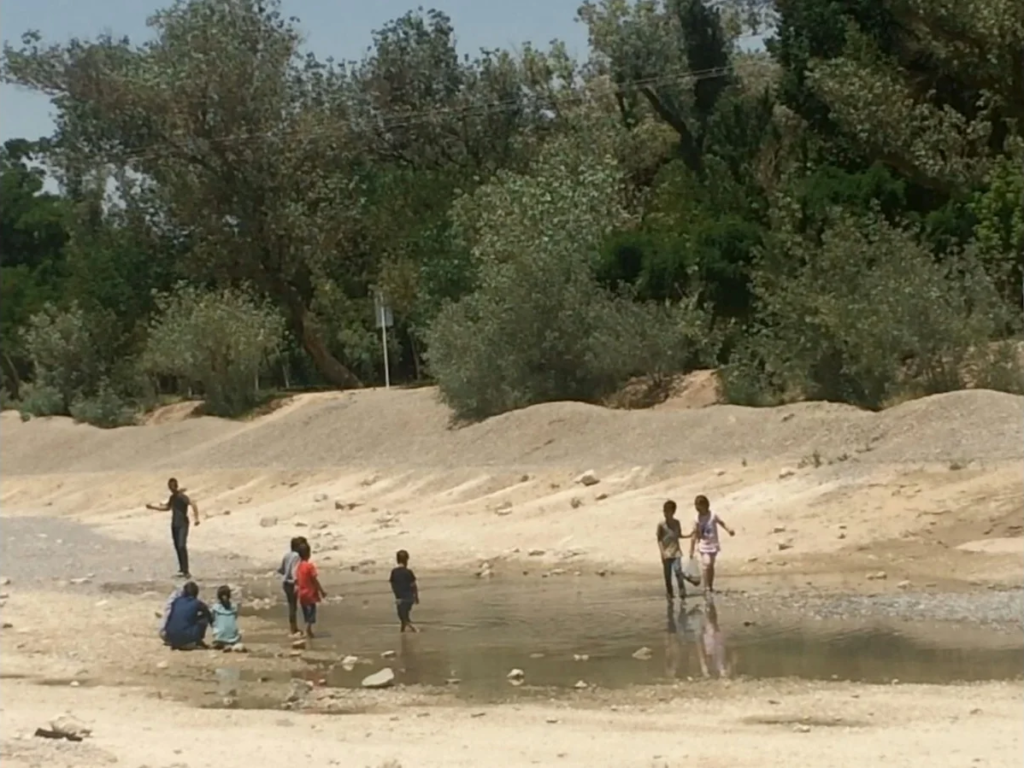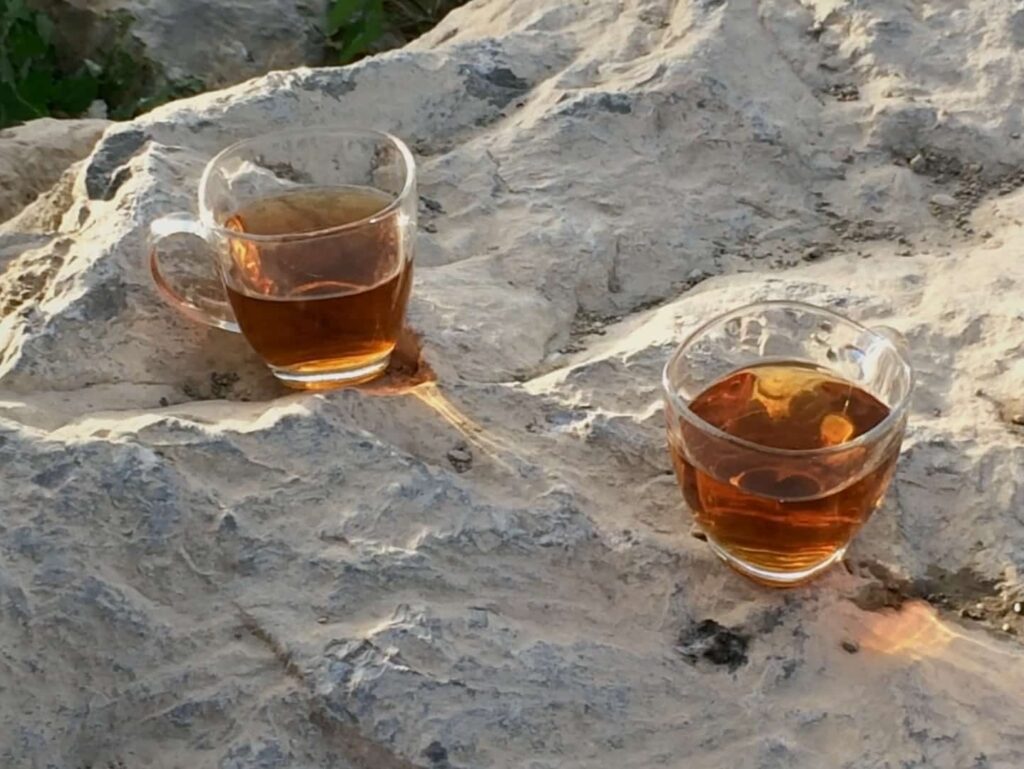
on Faraz Fesharaki’s What Did You Dream Last Night, Parajanov? (2024)
Despite gaining instant global attention only in 2022, following the unresolved death of Jina Mahsa Amini—a young Kurdish woman previously detained by the Guidance Patrol—civil protests in Iran have been flaring up periodically since the late 1990s. After the overthrow of Shah Mohammad Reza Pahlavi in the 1979 revolution, the country was transformed under the religious leadership of Ruhollah Khomeini into an Islamic Republic. Since then, the authorities have consistently attempted to frame this broad social unrest as a reawakening of the Iranian national spirit, a turn toward strict theocracy based on the organic expression of the popular will. Yet dissatisfaction with the monarchy at the time encompassed a range of demands and perspectives on what kind of society was worth building. In the post-revolutionary period, the mass protests under the slogan “Woman, Life, Freedom” (Kurd. Jin, Jiyan, Azadî; Pers. Zan, Zendegī, Āzādī), with Amini as their symbolic figurehead, reflect the progressive aspirations of a growing segment of the population that places women’s rights front and center.
In contrast to this direct point of entry, cinema allows for more ingenious ways to engage with the historical and political context. In that sense, What Did You Dream Last Night, Parajanov? (Was hast du gestern geträumt, Parajanov?, 2024) by Faraz Fesharaki is both a relatively unconventional reflection on contemporary Iranian social reality and an introspective meditation on the filmmaker’s own creative capacities and preoccupations. It is an impressive directorial debut, in addition to Fesharaki’s accomplishments as a cinematographer—among his recent most notable projects is Aleksandre Koberidze’s What Do We See When We Look at the Sky? (Ras vkhedavt, rodesac cas vukurebt?, 2021). Despite this professional background, Fesharaki’s latest work makes surprisingly little use of traditional camerawork. Composed primarily of screen grabs from video calls, it shines instead through its inventive narrative structure.
Given that Fesharaki openly blends cinematic reality with the personal, it is useful to know that he studied in Berlin in the 2010s, having left his family behind in Isfahan. The films suggests that Fesharaki regularly kept in touch with his parents and friend Rahi Sinaki, a classically trained musician educated in Linz, living between Iran and Austria. The film’s title refers to the way Sinaki jovially greets Fesharaki during one of their calls—in a great style, this is how Fesharaki himself figuratively becomes another (Sergei) Parajanov, the famous Armenian, Tbilisi-born and Moscow-educated filmmaker, whose legacy lingers throughout the film in other subtle ways, too. The father appears on screen holding a large bowl of Japanese persimmons—a possible nod to Parajanov’s recurring motif of the pomegranate. Dreams, too, are a recurring subject of discussion, approached with curiosity and care. When the whole group visits Fesharaki in Berlin, the father remarks: “It’s entirely possible we dreamed this whole conversation.”
Some of Fesharaki’s interventions recall Jean-Luc Godard—if only in the bright red backgrounds onto which he overlays intertitles and excerpts from German and Iranian poetry, or in the way he disrupts narrative flow with cuts punctuated by the sound of the tar, a traditional Middle Eastern and Caucasian string instrument, and perhaps in the general invocation of revolution. There is also a hint of Abbas Kiarostami’s approach—his way of dissolving grand existential questions into simple, earthly minutiae. Kiarostami, a pivotal figure in Iranian cinema, is also something of an anchoring figure to the father—at one point, he appears on screen with the facial expression hidden behind a pair of sunglasses, playfully pointing out his resemblance to Kiarostami might bring him the respect of his son and wife. Turning to displaced direction, where he constantly engages with his origin at a distance, Fesharaki echoes Elia Suleiman’s Homage by Assassination, part of the omnibus The Gulf War… What Next? (1993). Much like Fesharaki’s relationship to Parajanov’s legacy, these affinities remain largely suggestive, and rather hover at the level of idea than form any clear convergence of styles or poetics.
The content of Fesharaki’s recorded conversations often comes across as banal at first. This includes parents showing off fresh fruit, Rahi showing off his new expensive jacket, explaining how to make toast with eggs and mozzarella, and discussing the weather or a leaky roof. The actual profoundness of this phenomenon is hinted at in one of the earliest intertitles interrupting the flow of the video calls, in the German verses: “And so time passes: spring, / summer, autumn, winter, / how lucky we are / to talk only about the weather.” The Iranian reality has been anything but banal throughout the years. And yet, even in times of major crisis, people still shape their days around absurdly simple things. That despite all of this, life can also be a lot slower and safer with all challenges considered, is echoed in Rahi’s impressions of Tehran once he briefly returns there from Vienna: he finds people acting calm and polite, no one is being pushed around in public, and no one wishes him to “return home” like they do in Europe.

Every seemingly innocent observation about life here and there is politically charged, after all. Every insight shared is tied to the turbulence from which new generations of Iranians have repeatedly been unable to escape. The conversations also touch on specific global political events of recent years. Apart from the Iranian protests—”covered by Al Jazeera, but not by Euronews,” as the father goes on to notice—there are also complicated situations taking place in Iraq, Gaza, Ukraine, and Greece. In the meantime, a pandemic has also happened. Despite spatial constraints, the story moves fluidly through time. The present moment is in constant dialogue with the past.
Former revolutionaries and part of the current for which the revolution was hijacked—i.e., diverted from the progressive direction they had hoped for—Mitra and Hasan Fesharaki speak to their son about Karl Marx with a mature sense of irony. They have integrated both the traps of their youthful ideals and the reality of a less-than-ideal outcome. Immersed in creative work and surrounded by art, they frequently reference popular music and poetry, when they are not recounting their activist past. In one of the father’s latest poems, poetic imagery is interwoven with revolutionary connotations. A storm scatters red poppies just like the eight-year war with Iraq once broke the revolutionaries, and a mirror reflects a missed opportunity for reckoning with a historical moment. The mother remembers the women she shared her prison cell with. The burden of a still unresolved social consensus continues to pass from generation to generation. Profound truths unfold in plain webcam images, ubiquitous in the digital age.
Based on listening and observation with minimal interference, Fesharaki’s film is one of many ideas, including those on a traditional Iranian family—a notion receiving wide approval since the revolution. One of the open-ended questions is that of the emancipation of Iranian women, dependent on deep structural dynamics, and transcending the particular case of the Fesharaki household. This family display awareness that traditions, much like revolutions, are constructions vulnerable to co-optation. That the monarchy was finally overthrown in the late 1970s does not mean that all members of Iranian society envisioned strict religious dogma as a pretext for repression, inequality, and rigid disciplinary control, all of which characterizes the country today.
The director’s sustained effort to document and archive fragments of his own life result here in a reflection on creative work itself. How to define it, let alone continuously draw material for it? A possible answer emerges in the father’s remark about the role God once played in human life: in modern times, God’s omnipresence is represented in the constant availability of the material that inspires. This also means that everything a person seeks is already close at hand—this is simply not always obvious. The tree remains invisible from the forest, one may say.
Later, the video calls are interspersed with mostly static and mute shots of German landscapes. Still, these scenes are not just simple diary entries—they form part of a dialogue between the filmmaker and his parents, who also send him letters in return. The exchange is illustrated in the juxtaposition of Iranian and German public spaces. One of the locations Fesharaki documents is the canal in Berlin into which the body of revolutionary Rosa Luxemburg was thrown in 1919, and the nearby commemorative plaque. Clearly, the place is not chosen randomly—it holds great historical significance and, ultimately, serves to ethically position Fesharaki himself.
Another important addition to the material in the film is the archival footage of a children’s school performance, likely drawn from a family home video. In the style reminiscent of late-1980s and early-1990s music videos and video art, the editing joins excerpts of children singing a patriotic song with grainy close-ups of flowers. A bizarre line from the children’s song warns, “Oooh, America, your death is near.” To distinguish showing from telling becomes increasingly more challenging, and this may as well go for all of history—the camera zooms in on the inscription on the wall reading, “Our revolution was an explosion of light.”
Fesharaki skillfully refracts Iran’s intergenerational social memory through the experiences of those closest to him. As a result, What Did You Dream Last Night, Parajanov? is a work free of pretension and ideological didacticism—at once a universal and deeply personal account of Iran’s recent history.